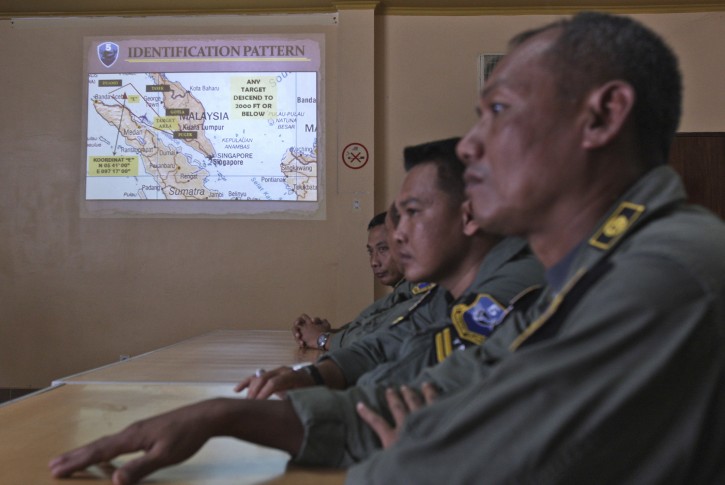 Paris – The search for Malaysia’s missing jet could speed development of new ways of locating wreckage, but such technology is unlikely to replace the traditional “black box” any time soon, France’s top crash investigator said on Wednesday.
Paris – The search for Malaysia’s missing jet could speed development of new ways of locating wreckage, but such technology is unlikely to replace the traditional “black box” any time soon, France’s top crash investigator said on Wednesday.
Subscribe to our Daily Roundup Email
Mystery over the Boeing 777’s whereabouts deepened on Wednesday when Malaysia said it was searching an area hundreds of miles from its last known position.
As well as scouring the area with ships, planes and satellites, investigators are trying to pick up signals from beacons on the jet’s data and cockpit voice recorders.
Proposals for helping with future searches include getting the jet to give its location automatically before an accident happens and a new, more widely accessible frequency for transmitting homing signals – expanding archaic transmissions that may be inaudible even to modern military search crews.
A French probe into the crash of an Air France jet in the Atlantic in 2009, which triggered a two-year $50 million search to find its crucial black boxes, led to a series of recommendations from France’s BEA crash investigation agency.
But some recommendations that could potentially make it easier to track down such aircraft such as the Malaysian jet are bogged down in talks between regulators and the aviation industry, with no timetable for putting them into effect.
“It is a subject still under discussion,” BEA director Remy Jouty said in an interview, adding last week’s disappearance of Flight 370 could focus further attention on the discussions.
Although one proposal, that the minimum battery life on locator beacons attached to the vital recording devices should be tripled to 90 days, has been backed by global regulators, it will not become mandatory until towards the end of the decade.
Under current rules, the beacons must be capable of sending out a tracking ping for 30 days before the signals die out.
In 2012, the BEA’s advice was adopted by the U.N.’s International Civil Aviation Organization, which urged members to make them mandatory from 2018. In the European Union, however, the changes will take effect in 2019, Jouty said.
The Atlantic jet disaster marked a turning point in the way such searches are handled and led to what, by the standards of complex aviation regulations that must be agreed globally and then translated into national laws, rapid action on batteries.
Even before the mandatory regulations come into effect, the longer-life batteries are already available and experts say from next year, only the newer 90-day versions will be produced.
“To my knowledge there is no problem of availability of the batteries,” Jouty said.
But so far only a handful of airlines, including Air France, have voluntarily switched to the longer batteries.
AUTOMATIC TRACKING DATA
The Air France 447 incident and the BEA’s lengthy final report also led to a deeper rethink of how aircraft can be redesigned to help investigators track the wreckage.
Aviation experts say such changes can take years to negotiate in part because the changes require new technology, but also because of competing interests over costs.
“When it comes to new regulations, it is common practice to study their cost-effectiveness, and U.S. and European law requires this. Of course, operators and manufacturers give their opinions but the authorities cannot ignore these matters,” Jouty said.
He said technical groups were looking at three suggestions, not all of which would necessarily be required by law.
Under one of these, a jetliner would automatically beam back
regular updates on its location throughout the flight.
Under the second proposal, the jet would automatically send out useful tracking data when it senses it is about to crash.
A third idea calls for the black box to be ejected from the aircraft just before impact, avoiding the risk of destruction.
A spokesman for ICAO said regulators and manufacturers had studied 42 accidents and were discussing the best ways of finding a downed aircraft and deploying flight recorders, but that it could not yet say what action would be taken or when.
Meanwhile, proposals by some avionics firms to replace black boxes – which are in fact orange – with satellite data to monitor systems in real time are struggling to find support.
The Rio-Paris Air France crash and now the Malaysian missing jet mystery have rekindled calls for non-stop satellite data and even live voice transmissions or a “skycam” in the cockpit.
But Jouty said the technology was not yet “mature” – a view echoed by Europe’s aviation safety regulator and many airlines.
“Sending continuous data for all flights would create a huge amount of data and might get very difficult to monitor and analyze,” said Tony Tyler, director general of the International Air Transport Association, adding the industry remained safe.
Some pilots oppose the idea of routine cockpit conversations being overheard from far away, but groups such as the relatives of the Air France crash victims have called for maximum investment in new safety measures to prevent future disasters.
